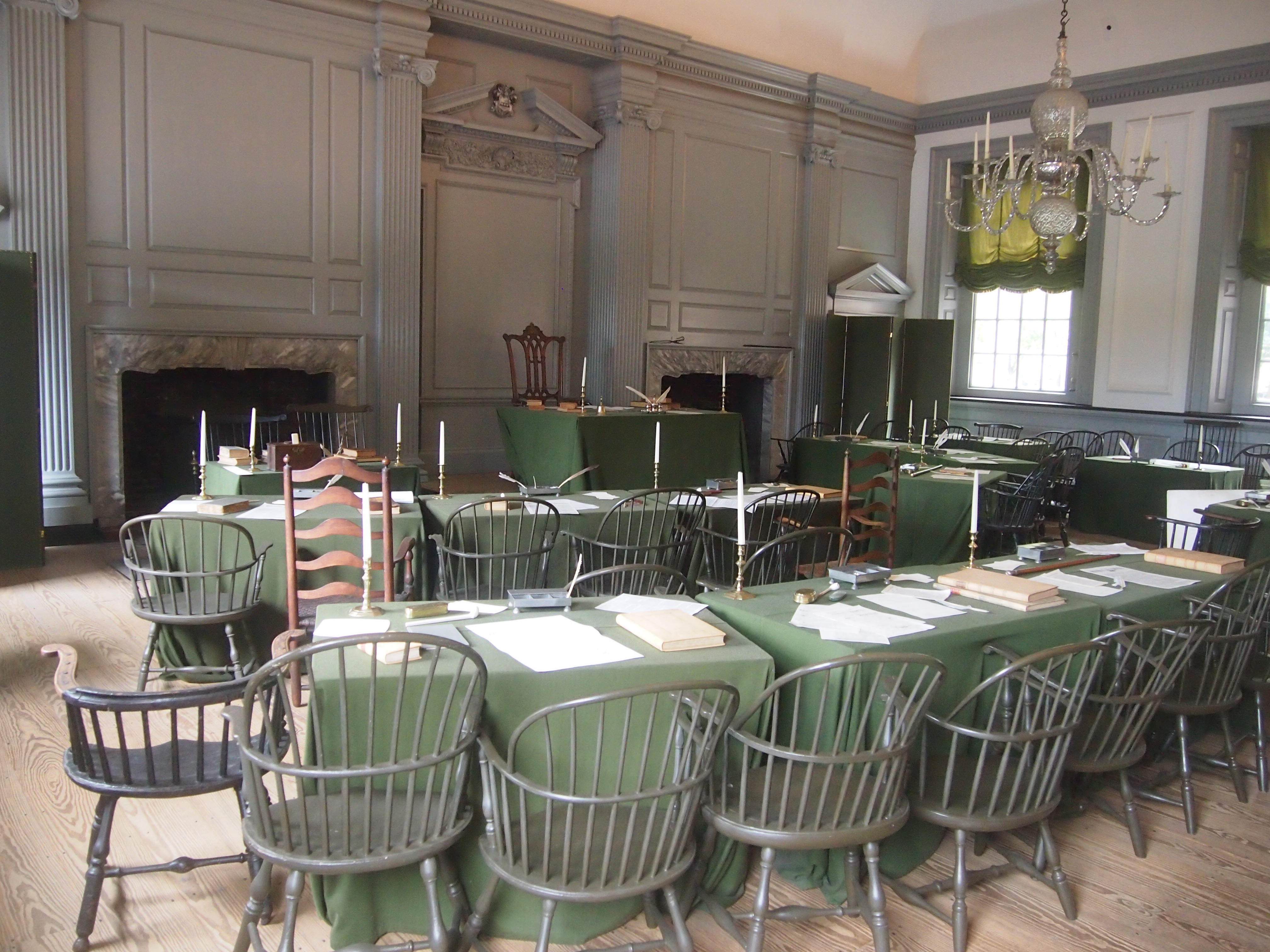Just before midnight last night, I heard the distinctive popping of fireworks in the neighborhood.
I took that to mean that the Cubs won in far-off Cleveland. So they had. Not to be a mope, but I don’t know that the curse is actually broken. The curse could be, after all, that the Cubs will only win the World Series once a century. We may not ever find out; Neil and his generation might, though.
“Independence Hall,” said the guide at Independence Hall, “is the most important historic building in the entire country.” The guide, a gentlemen of retirement age and now a volunteer for the National Park Service, had probably been a teacher at one time. He had that manner, anyway.
He made a brief case for his assertion. “How can I say that? There are a lot of important historic buildings in every part of the country. But the key word is country. Because of what happened here, there’s a country that has a history.”
Not a bad argument. When you’re in a place like Independence Hall, where such weighty events occurred, such notions carry some weight. In as much as the United States was created in one place, this was it.
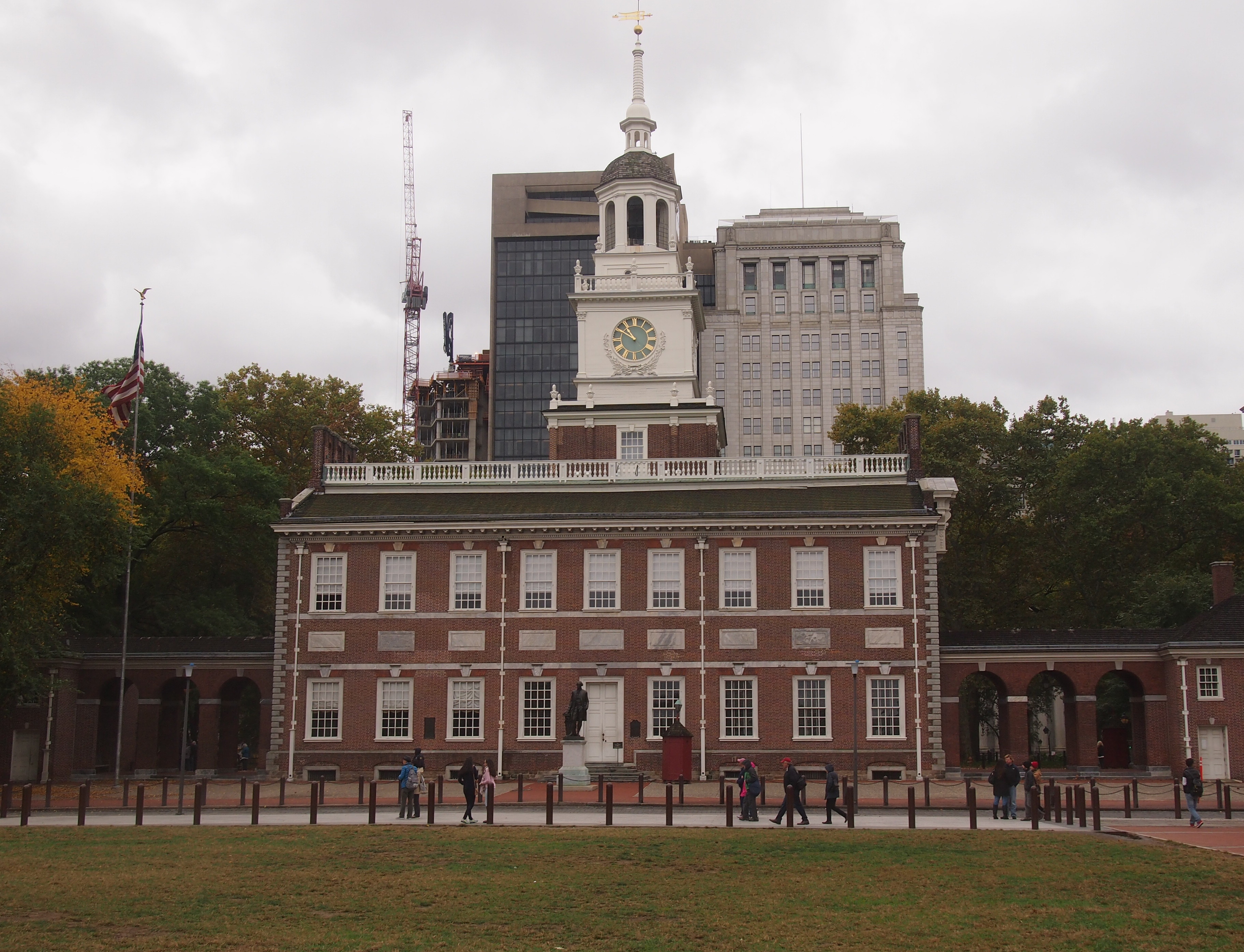 There’s nothing surprising about how the building looks. Everyone’s seen it depicted any number of times, including the Bicentennial Half Dollar (a nice design; the coin should have kept it) and the back of the current $100 Federal Reserve Note, which admittedly, I don’t see that much.
There’s nothing surprising about how the building looks. Everyone’s seen it depicted any number of times, including the Bicentennial Half Dollar (a nice design; the coin should have kept it) and the back of the current $100 Federal Reserve Note, which admittedly, I don’t see that much.
What surprised me was that Chestnut St., an ordinary street, runs right in front of the building. Maybe that’s too important a city street to close off, though I would have guessed that security-minded, or -obsessive, officials would want to. Apparently not.
The building was designed by Andrew Hamilton to house the Assembly of the Commonwealth of Pennsylvania, and finished in 1753. Interestingly, in our time the building is actually owned by the City of Philadelphia — the Commonwealth having quit using it long ago — but administered by the National Park Service since 1948.
Another thing I learned about Independence Hall: William Strickland designed its distinctive clocktower, the same architect who did the fine Tennessee State Capitol. That was well after the meetings that ushered in the Declaration and the Constitution, however. The original steeple had rotted away as early as the 1780s, and was demolished in 1781. The Strickland replacement wasn’t until 1828, so when the delegates met to fix the Articles of Confederation in ’87, and came away with a new Constitution, that isn’t what they would have seen.
Independence Hall is only part of Independence Hall National Historic Site. Other structures include a modern Visitors Center, the Supreme Court Chamber in Old City Hall, Congress Hall, the First and Second Banks of the United States, Carpenters’ Hall, Merchants’ Exchange — another Strickland building — the Todd House, the Bishop White House, and of course the Liberty Bell Center.
There was a long line to get into to see the Liberty Bell (it too has been on a coin. More than one). I didn’t feel like waiting, especially since the bell is visible from a window, fairly close up. It has heft, that’s for sure. And yet it’s cracked. Maybe that’s a better symbol of fragile liberty than is generally acknowledged.
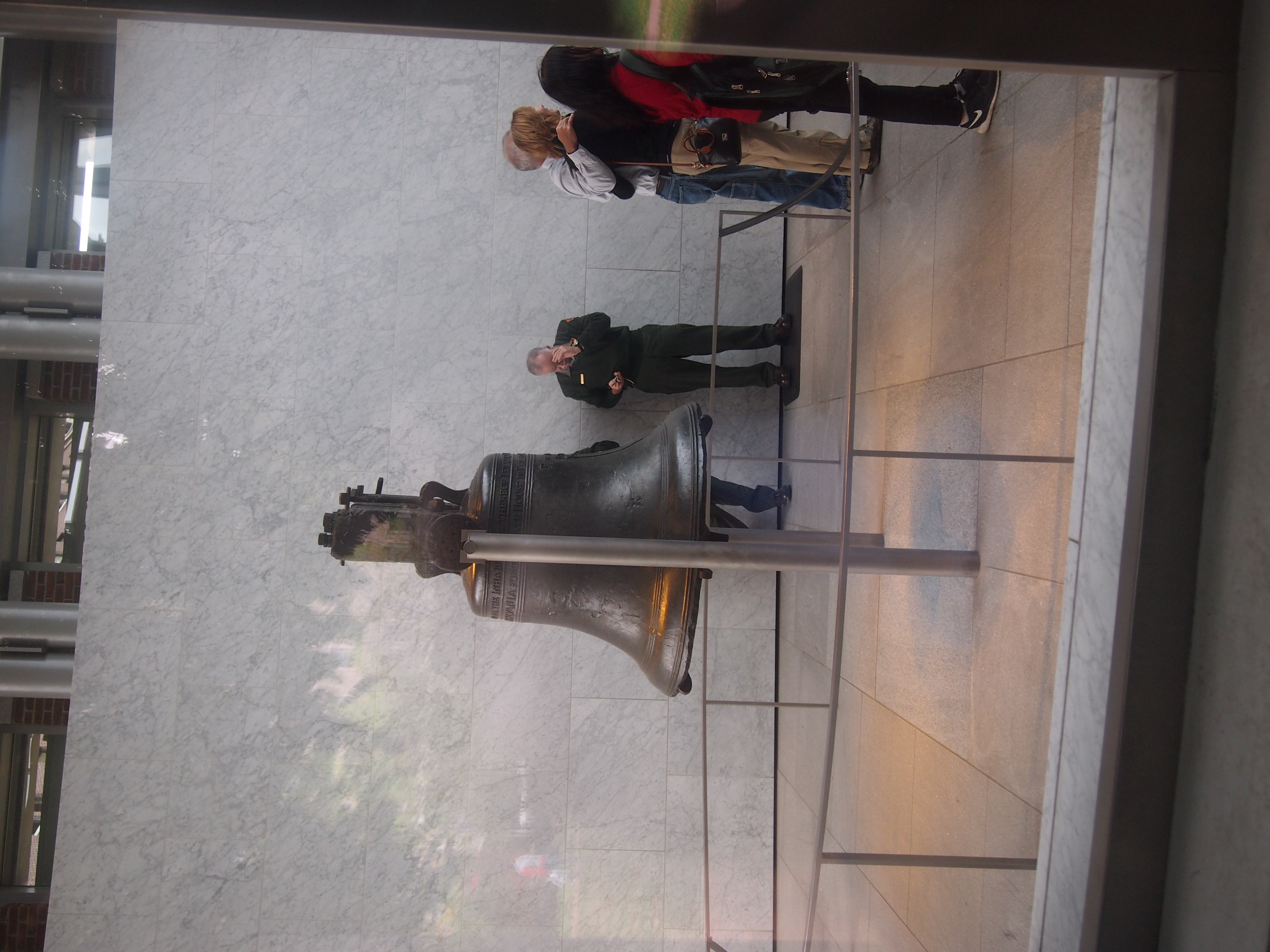 Getting into Independence Hall took a fair amount of time, first waiting to go through a metal detector, and then waiting for your timed tour of the inside. If you don’t order your tickets ahead of time, you risk not being able to get in.
Getting into Independence Hall took a fair amount of time, first waiting to go through a metal detector, and then waiting for your timed tour of the inside. If you don’t order your tickets ahead of time, you risk not being able to get in.
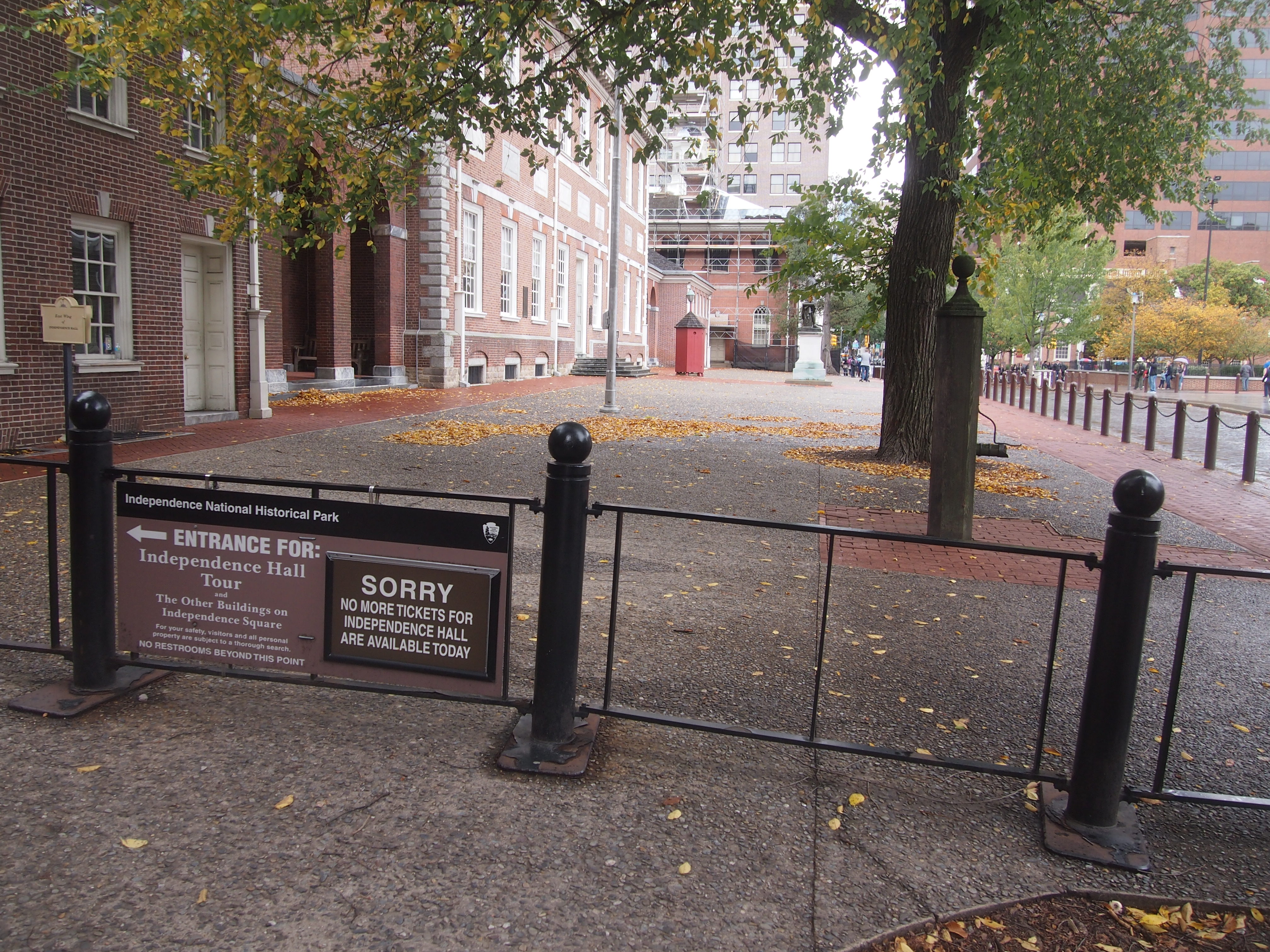 Upon entering Independence Hall, you first assemble in a room — the East Wing of the building — in which the guide tells you about the building, how to comport yourself, etc. Then you enter the room that used to be Pennsylvania Supreme Court chamber; here’s a better picture than I could take.
Upon entering Independence Hall, you first assemble in a room — the East Wing of the building — in which the guide tells you about the building, how to comport yourself, etc. Then you enter the room that used to be Pennsylvania Supreme Court chamber; here’s a better picture than I could take.
The current interior of the courtroom, as well as the Assembly Room famed for the Declaration and the Constitution, is a mid-20th century reconstruction by the National Park Service, with the public rooms restored to their 18th-century appearance. Between the late 18th century and the mid-20th, after all, the building was changed and modified, as buildings tend to be.
This is the Assembly Room.
“One the questions I’m always asked,” our pedagogic guide said, “is whether the furniture is original. The answer is no. Most of it isn’t. But if you think about, the furniture isn’t why you’ve come to see this room. You’re here because what happened here.”
Sure enough. But he did point out that the president’s chair on display on the dais is the one that George Washington sat in when he presided at the Constitutional Convention.
Upstairs is the Long Room, where events were, and are, held. It’s long, all right.
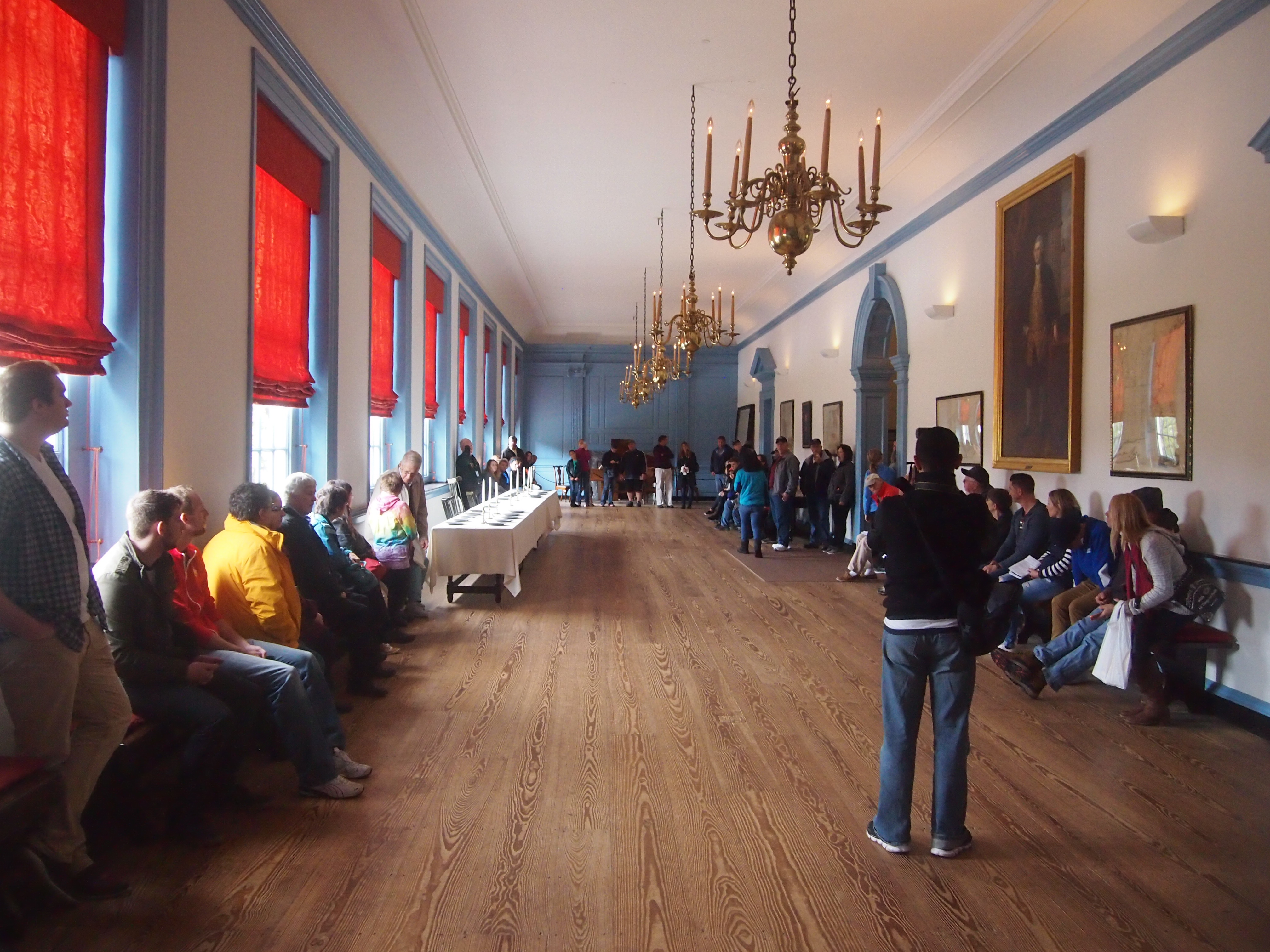 Our guide had more tidbit to offer when we were there. During Lafayette’s triumphal tour of the United States in 1824-25, when he was feted everywhere he went, a particularly lavish reception for was held for him in the Long Hall, which was part of the Pennsylvania State Hall at the time (he got a parade in Philly too). The building was called the “Hall of Independence” for the event, the first known reference using that terminology. That was an early step for the building toward becoming a National Historic Site and a World Heritage Site too.
Our guide had more tidbit to offer when we were there. During Lafayette’s triumphal tour of the United States in 1824-25, when he was feted everywhere he went, a particularly lavish reception for was held for him in the Long Hall, which was part of the Pennsylvania State Hall at the time (he got a parade in Philly too). The building was called the “Hall of Independence” for the event, the first known reference using that terminology. That was an early step for the building toward becoming a National Historic Site and a World Heritage Site too.
